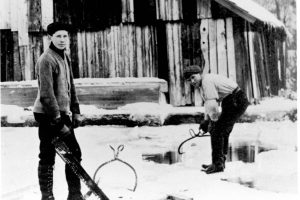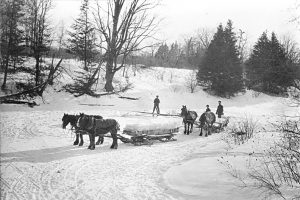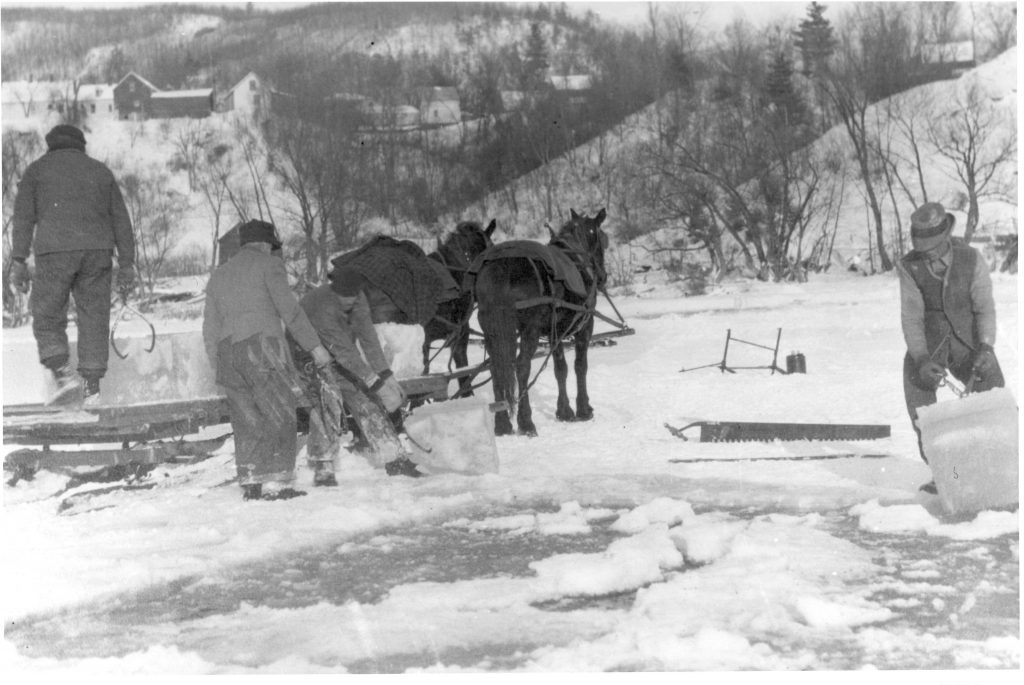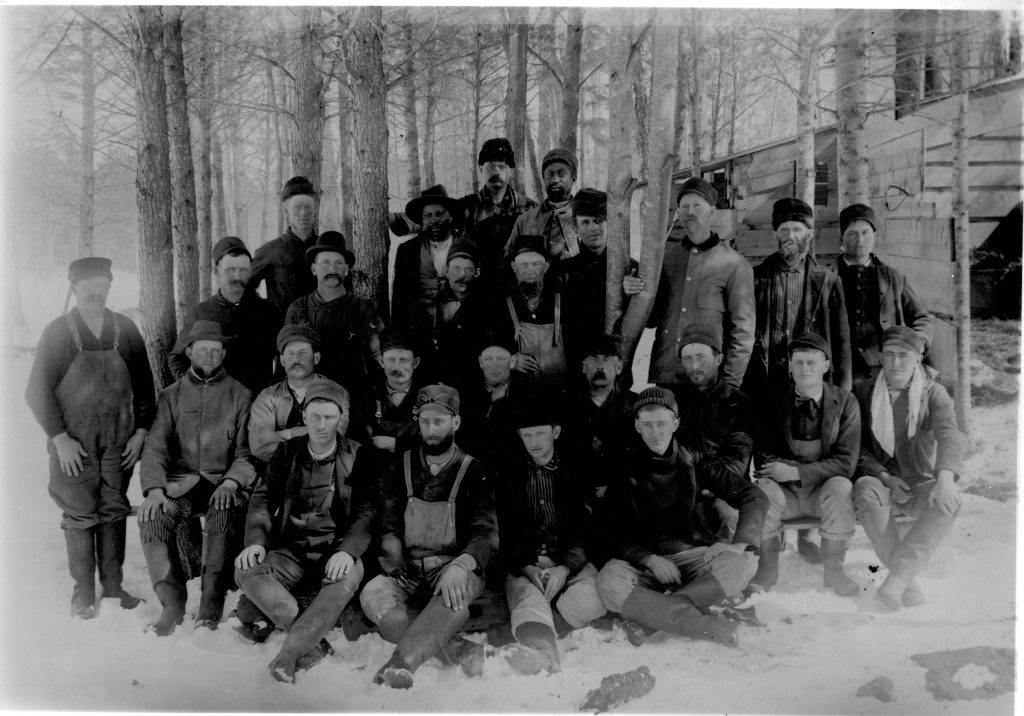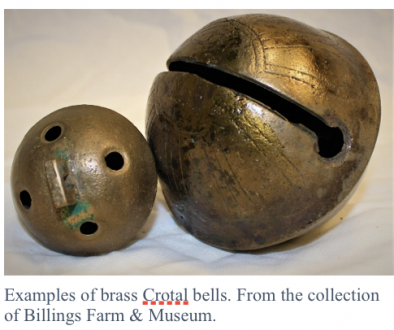As January and February are Vermont’s two bitterest and coldest months, this blog post is focused on the technology and tools of ice cutting.
Winter has settled in and still has weeks before it lets go to warmer weather. Farmers are idle without fields to tend, or are they? In Vermont and the northeastern areas of the United States, farmers found a field that could be harvested during the coldest months, at least until refrigerators and freezers came to be.
The Billings Estate in the late 1800s had its own icehouse and access to a fresh water source; The Pogue on Mt. Tom. The farmers that tended the fields spring to fall, found another field to harvest during January and February. The ice that The Pogue produced was in their back yard and a downhill trip to the icehouse for storage. The crew that worked The Pogue harvesting process numbered 20-30 men and used teams of horses from the farm. The icehouse doubled as a storage space for the harvested ice and had a smaller room that stored could be used for cool storage for products, such as the butter made by the farm.
Before even contemplating a harvest, the ice needed to be thick enough: 2 inches of ice can support a man, 4 inches are necessary to support a horse, and 5 inches to support a horse and equipment (Seavey, 2016). Ten to fourteen inches of ice was optimal for harvesting; regular ice depth measurements were taken of the ice field by using an auger to drill a hole and inserting a measuring rod with graduated markings.
Once the harvest got underway, there were a few key pieces of equipment that the men used. Ice saws were used to hand cut the ice in to strips that were more manageable for later barring into smaller ice cakes. The desired final ice cake dimension was 22 x 32 inches; a 12-inch thick ice cake weighed about 282 pounds while a 14-inch thick ice cake weighed about 319 pounds. These hand cuts were previously grooved for easier cutting at widths of 22- or 33-inches, allowing the 4- to 5-foot-long saw to follow a straight path and break off the larger strips of ice.
The teeth of an ice saw were coarse and cut only on the down stroke. Handles on the saws were perpendicular to the blade’s length, allowing for the sawyer to hold with two hands either side of the blade and keep themselves centered. The motion the sawyer used was elliptical and an experienced sawyer could cut 1 linear inch of 12-inch-thick ice per stroke using most of the saw blade length (Seavey, 2016). Working at 15 strokes a minute, a veteran sawyer could cut 75 feet of ice in an hour.
Another piece of equipment used during the harvest was a breaking bar. Breaking bars had wedge-shaped blades, that when driven into the grooves in the ice strips could split the ice into the desired 22 x 32 inch ice cake. The wielders of these breaking bars, barmen, would be stationed on a “bar bridge” that spanned the open channel and allowed for them to get the leverage needed. They would drive their bar into the groove and apply a twisting force. When the break bar was applied correctly, barmen were able to break the cakes off evenly and cleanly. A clean break, and subsequently a clean cake, was better for storage.
Works Cited:
Seavey, Aimee. “Cool Tradition: Its Crop Is No Longer Making Its Way to the Caribbean, but for One Maine Town, the Passing of Another New England Winter Is Marked, as It Has Been for Centuries, by the Harvesting of Ice.” Yankee, no. 1, 2016, p. 20. EBSCOhost, search.ebscohost.com/login.aspx?direct=true&db=edsggo&AN=edsgcl.439951523&site=eds-live&scope=site.
Seymour, Jean, and Bud Seymour. “Ice Harvesting.” Historic Sodus Point, Sodus Bay Historical Society Newsletter, 3 Feb. 2020, historicsoduspoint.com/commerce/ice-harvesting/.

